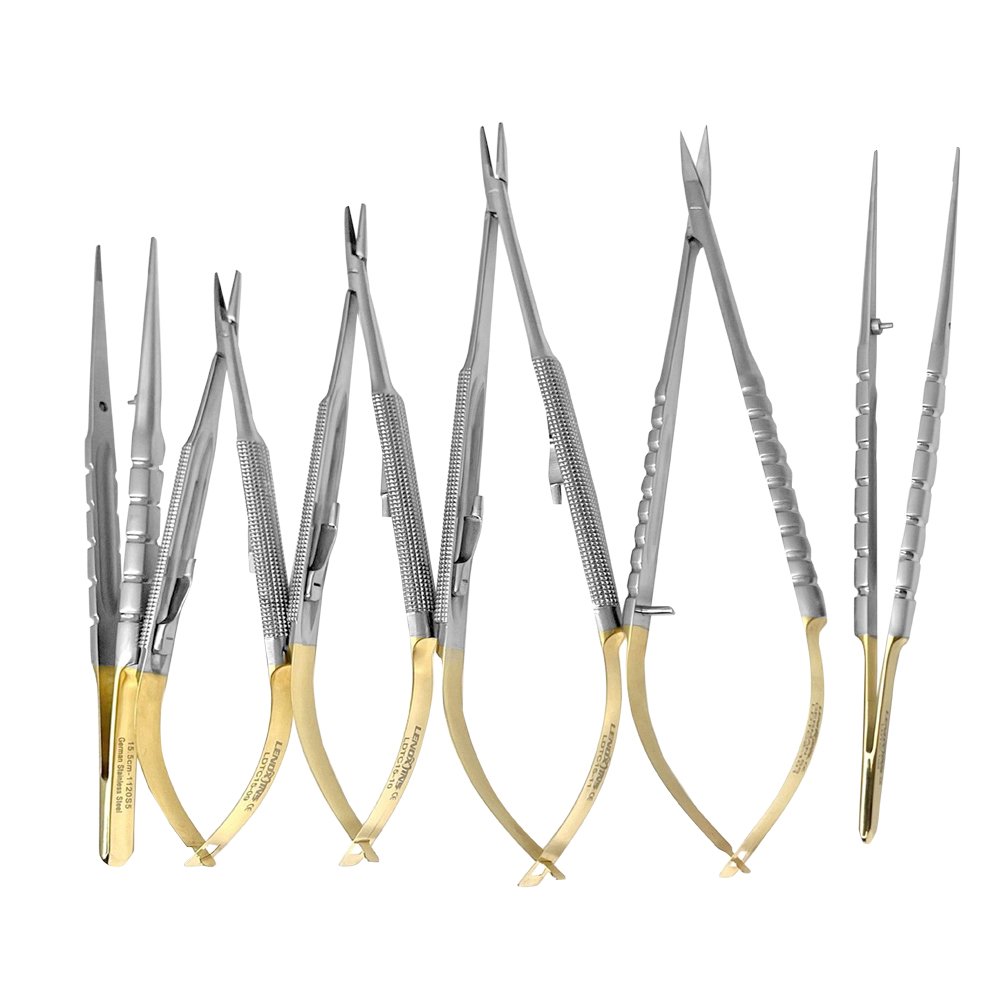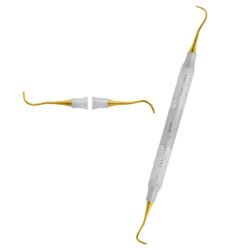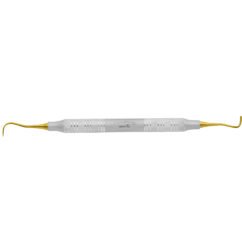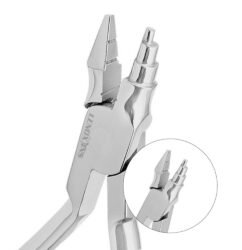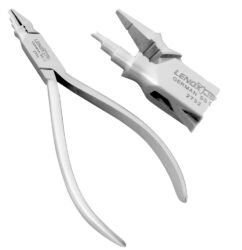Angled vs Straight Dental Instruments: Choosing What Fits Your Technique

Mastering Dental Tools: Angled vs. Straight Designs for Peak Performance
Choosing the right dentaltool—whether it’s an angled dental instrument or a straight dental instrument—can dramatically elevate procedural accuracy and practitioner comfort from the very first cut. Dental pros grapple with reaching posterior areas, enduring hand fatigue during lengthy sessions, and balancing robust durability with budget realities. This guide offers practical insights into design principles, clinical applications, ergonomic considerations, material science, value analysis, and the latest innovations. You’ll discover:
- The core distinctions in shape, function, and advantages that set angled instruments apart from their straight counterparts
- Clinical scenarios—from root canal treatments to lab work—where each style truly shines
- Ergonomic features (handle size, weight, grip) designed to safeguard practitioner well-being
- Material selection and upkeep strategies for enduring performance
- Cost factors and cutting-edge smart features shaping the future of dentalhandpieces
What Are the Key Differences Between Angled and Straight Dental Instruments?
Angled and straight dental instruments diverge in their geometry, the range of applications they suit, and their ability to access challenging areas. An angled instrument features a bent shank or a contra-angle head, directing rotary or manual force into hard-to-reach spots for enhanced precision. Straight instruments align the tool’s axis directly with the clinician’s grip, maximizing torque transfer and stability. Grasping these fundamental design principles is crucial for comparing their performance and selecting the ideal tool.
How Are Angled Dental Instruments Designed and What Are Their Uses?
Angled dental instruments incorporate an offset head—often around 45 degrees—to channel cutting or scaling force into posterior or subgingival regions with minimal wrist contortion. This design improves the clinician’s line of sight and tactile feedback, boosting precision in deep cavity preparations and root canal access.
- Contra-anglehandpieces deliver high-speed rotary action for refining restorations
- Angled scalers and curettes effectively reach beneath the gumline during periodontal scaling
- Curved elevators facilitate less traumatic extractions in molar areas
By providing angled access, these instruments can shorten procedure times and reduce patient trauma, guiding practitioners toward more consistent results in confined oral spaces.
What Defines Straight Dental Instruments and Their Typical Applications?
Straight dental instruments feature a linear shaft that transmits rotational or manual force directly along the handle’s axis, delivering maximum torque and power. This configuration makes them ideal for tasks involving bulk material removal, laboratory adjustments, and surgical bone contouring.
- Straight handpieces power burs for crafting prosthetics and trimming crowns
- Lab lathe instruments shape acrylics and dental models with consistent rotation
- Chisels and straight elevators apply controlled leverage during extraction procedures
How Do Angled and Straight Instruments Compare Visually and Functionally?
Here’s a direct comparison of key attributes between angled and straight designs:
| Instrument Type | Access Angle | Primary Benefit | Typical Use Case |
|---|---|---|---|
| Angled Handpiece | 45°–90° offset | Enhanced posterior access and precision | Cavity preparation, root canals |
| Straight Handpiece | 0° alignment | Maximum torque and stability | Lab work, crown adjustment |
| Angled Scaler/Curette | Curved shank | Subgingival scaling with minimal wrist strain | Periodontal cleaning |
| Straight Chisel/Elevator | Linear blade | Controlled leverage in extractions | Anterior extractions, bone shaping |
Each design offers a distinct balance between reach and power, guiding the selection process based on specific clinical demands.
When Should Dental Professionals Choose Angled vs. Straight Handpieces?
The decision between angled and straight handpieces hinges on the procedure’s objectives and the patient‘s oral anatomy. Angled handpieces excel in tight, posterior areas where maneuverability and visibility are challenging. Straight models are superior in open fields and laboratory settings where raw power and direct alignment are paramount for efficiency. These distinctions are key to selecting the right instrument for restorative, endodontic, surgical, and laboratory applications.
What Are the Benefits of Contra-Angle Handpieces in Restorative and Endodontic Procedures?
Contra-anglehandpieces significantly enhance precision by redirecting rotary action into confined spaces, reducing the need for clinician wrist deviation and improving the line of sight.
- Superior posterior access minimizes unnecessary removal of tooth structure outside the preparation zone.
- Improved control during root canal shaping reduces the risk of creating ledges or perforations.
- Integrated water spray systems maintain clear visibility and prevent thermal damage.
These advantages contribute to faster cavity finishing and safer endodontic cleaning, ultimately supporting better patient comfort and clinical outcomes.
How Are Straight Handpieces Best Used in Laboratory and Surgical Settings?
Straight handpieces provide direct torque and stability, making them the preferred choice for laboratory prosthetic work and bone adjustments during surgical procedures.
- Acrylic polishing: consistent RPMs ensure smooth prosthetic surfaces
- Model trimming: direct alignment minimizes tool chatter on dental stone
- Surgical burs: high-power cutting for osteotomies and implant site preparation
By leveraging linear force transmission, clinicians can achieve uniform material removal and predictable surgical cuts in spacious operative fields.
What Are the Differences Between High-Speed Angled and Low-Speed Straight Handpieces?
Here’s a performance comparison between high-speed angled handpieces and low-speed straight handpieces:
| Feature | High-Speed Angled | Low-Speed Straight |
|---|---|---|
| RPM Range | 200,000–400,000 | 40,000–80,000 |
| Torque | Moderate | High |
| Cooling Mechanism | Internal water spray | External irrigation adapter |
| Ideal Procedures | Cavity prep, crown cutting | Prosthetic finishing, lab |
| Clinician Control | Fine cutting, minimal vibration | Greater leverage, bulk removal |
High-speed angled units facilitate intricate cutting with integrated cooling, while low-speed straight models excel at power-driven shaping and polishing.
How Does Ergonomics Influence the Selection of Angled and Straight Dental Instruments?
Ergonomic instrument design is crucial for reducing muscle strain and fatigue, thereby enhancing clinician performance and long-term musculoskeletal health. Tools with optimal handlediameter, balanced weight distribution, and textured grips promote a precise grip and minimize physical exertion. Incorporating ergonomics into instrument selection ensures sustainable practice and consistent results.
Why Is Ergonomic Design Critical for Clinician Health and Performance?
Ergonomic design minimizes hand fatigue, reduces the risk of carpal tunnel syndrome, and alleviates back or neck strain by aligning force application with natural wrist posture. Instruments with biomechanically optimized shapes help maintain a neutral wrist angle and distribute load evenly, leading to fewer necessary breaks and improved focus during extended procedures.
What Handle Diameter, Weight, and Grip Features Optimize Comfort and Reduce Fatigue?
Dental instruments perform best when they adhere to these ergonomic guidelines:
- Handlediameter of at least 10 mm reduces the pinch force on the fingers
- Total instrument weight under 15 g minimizes hand muscle activation
- Textured silicone or knurled metal grips enhance slip resistance without requiring excessive squeezing
How Do Angled and Straight Instruments Differ in Ergonomic Benefits?
Angled instruments often feature compact head designs that minimize wrist deviation, while straight models maintain a balanced weight distribution along the shaft.
- Angled handpieces promote neutral wrist alignment during posterior access
- Straight handpieces distribute weight evenly for steady torque application
Selecting the appropriate design leverages these ergonomic advantages to match specific procedural demands and the clinician’s posture.
What Materials Are Used in Angled and Straight Dental Instruments and How Do They Affect Durability?
The choice of instrument materials—such as stainless steel, titanium, and specialized coatings—determines their resistance to corrosion, compatibility with sterilization methods, and overall lifespan. Higher-grade alloys and advanced surface treatments enhance hardness and reduce wear, ensuring consistent cutting performance and simplifying maintenance.
How Does Stainless Steel Compare to Titanium and Coated Materials?
Stainless steel offers excellent hardness and affordability, while titanium provides a superior strength-to-weight ratio and biocompatibility. Coatings like diamond-like carbon (DLC) further improve surface hardness and reduce friction.
| Material | Hardness | Weight | Corrosion Resistance | Typical Use |
|---|---|---|---|---|
| Stainless Steel (SS) | 50–55 HRC | Moderate | High | Standard burs, chisels |
| Titanium Alloy (Ti) | 48–52 HRC | Low | Very High | Implant instruments |
| DLC Coated | 60–65 HRC | Low-Moderate | Superior | High-wear cutting edges |
Each material combination strikes a balance between cost, performance, and sterilization requirements, making them suitable for both angled and straight configurations.
What Impact Do Materials Have on Sterilization and Longevity?
Harder alloys and wear-resistant coatings can withstand repeated autoclave cycles without undergoing dimensional changes or surface pitting. Instruments made from titanium or coated steel often maintain their cutting efficiency for 2–3 times more cycles than uncoated stainless steel, reducing the need for frequent replacements and minimizing procedural variability over time.
How Do Material Choices Differ Between Angled and Straight Instruments?
Angled handpieces typically feature stainless steel bodies with ceramic bearings, whereas surgical straight handpieces often utilize titanium to reduce weight during extended osteotomies. Coated cutting instruments—regardless of their angle—benefit from DLC or titanium nitride layers to maintain sharpness longer and simplify sterilization protocols.
What Are the Cost-Benefit Considerations When Choosing Between Angled and Straight Dental Instruments?
Evaluating the initial investment, ongoing maintenance, and instrument lifespan reveals the true cost-effectiveness. Higher upfront costs for premium materials and ergonomic designs often lead to lower long-term expenses due to reduced repair and replacement needs.
How Do Initial Costs Compare for Angled vs. Straight Instruments?
Premium angled handpieces equipped with internal water spray, ceramic bearings, and ergonomic handles typically cost 20–30% more than basic straight models. Laboratory-grade straight handpieces are generally at the lower end of the price spectrum, making them an accessible option for routine model work and prosthetic adjustments.
What Are the Maintenance and Repair Costs Over Time?
Angled handpieces with complex gear systems may require periodic lubrication and bearing replacement, with service costs averaging $50–$100 per instance. Straight handpieces generally incur minimal repair expenses but might necessitate frequent bur replacements if constructed from lower-grade steel. Lifecycle maintenance budgets often balance out when considering the enhanced performance and reduced hand fatigue offered by higher-quality instruments.
How Does Instrument Longevity Affect Overall Cost-Effectiveness?
Instruments crafted from titanium or coated stainless steel frequently outlast standard steel models by two to three times, effectively amortizing a higher initial expenditure through fewer replacements. Clinicians who opt for durable, ergonomic designs can achieve a lower total cost of ownership over a five-year period.
What Advanced Applications and Innovations Are Emerging in Angled and Straight Dental Instruments?
Continuous research and engineering are introducing specialized geometries, integrated lighting, and digital sensors that significantly enhance instrument functionality. These innovations aim to improve visibility, data tracking, and procedural consistency across restorative, surgical, and laboratory applications.
Which Specialized Angled Instruments Are Used in Oral Surgery and Implant Procedures?
Oral surgeons utilize 20°-angled implant handpieces equipped with torque feedback sensors for precise osteotomy drilling. Angled piezoelectric scalers are employed to shapebone with minimal thermal impact. These advanced tools help reduce tissue trauma and improve placement accuracy in posterior and buccal implant sites.
What Innovations Are Improving Straight Instrument Design and Functionality?
Modern straight handpieces now feature auto-reverse torque mechanisms, fiber-optic illumination, and brushless motors to deliver smoother power transfer and reduced vibration. Laboratory instruments are incorporating digital encoders for precise RPM control, enabling the reproducible fabrication of prosthetics.
How Are Digital Integration and Smart Features Enhancing Dental Instruments?
Smart handpieces integrate Bluetooth sensors that capture data on torque, speed, and usage duration, feeding this information directly into practice management software. This connectivity supports predictive maintenance and quality assurance by alerting clinicians to potential performance degradation before it impacts procedures.
How Can Dental Professionals Make Informed Choices When Selecting Angled or Straight Instruments?
Selecting the right instrument involves carefully considering the procedure type, access requirements, ergonomic properties, material quality, and the manufacturer’s reputation. A systematic selection process ensures that clinical goals are aligned with instrument capabilities, optimizing both patient care and resource allocation.
What Are the Essential Criteria for Selecting the Right Dental Instrument?
Clinicians should meticulously evaluate:
- Clinical Application: Is it for restoration, endodontics, surgery, or laboratory work?
- Access Angle: Does it provide necessary reach into posterior areas or stability in open fields?
- Ergonomics: Consider handle diameter, weight, and grip texture for comfort.
- Material Quality: Assess alloy grade, coating, and sterilization compatibility.
- Reliability: Look into service intervals, warranty, and available maintenance support.
Balancing these factors ensures that each tool is perfectly suited to both the clinical demands and the practitioner’s well-being.
How Do Procedure Type and Access Influence Instrument Choice?
Tight posterior restorations necessitate an angled contra-anglehandpiece, while comprehensive prosthetic finishing in the anterior arch might favor a straight, high-torque model. Periodontal scaling beneath the gingival margin requires curved scalers, whereas surgical osteotomies demand straight, surgical-grade burs.
What Role Does Manufacturer Reputation and Product Quality Play?
Reputable manufacturers invest in precision engineering, rigorous quality control, and robust service networks that minimize operational downtime. Instruments from trusted brands often come with extended warranties, documented performance metrics, and broader accessory compatibility, signaling a sound investment for any practice.
Frequently Asked Questions (FAQ)
What is the primary difference between angled and straight dental instruments?
Angled instruments feature a bent shank or contra-angle head for enhanced access to posterior or hard-to-reach areas, improving precision and visibility. Straight instruments have a linear shaft, maximizing torque transfer and stability for bulk material removal, lab work, and surgical bone contouring.
How do ergonomic factors influence instrument selection?
Ergonomic design is crucial for clinician health and performance. Instruments with optimal handle diameter (e.g., 10mm+), balanced weight (under 15g), and textured grips reduce hand fatigue, minimize wrist strain, and improve control, leading to better long-term musculoskeletal health and consistent results.
What materials are commonly used in dental instruments and why?
Common materials include stainless steel for hardness and affordability, titanium for its superior strength-to-weight ratio and biocompatibility, and specialized coatings like diamond-like carbon (DLC) for enhanced surface hardness and wear resistance. Material choice impacts durability, sterilization compatibility, and overall lifespan.
What are the cost considerations when choosing between angled and straight instruments?
Initial costs for premium angled instruments can be higher due to complex designs and advanced features. However, durable materials and ergonomic designs often lead to lower long-term expenses by reducing maintenance, repair, and replacement needs. Lifecycle cost-effectiveness should be considered over just the upfront price.
How are digital integration and smart features enhancing dental instruments?
Innovations include integrated lighting, brushless motors, auto-reverse torque mechanisms, and digital sensors. Smart handpieces can capture data on torque, speed, and usage, feeding into practice management software for predictive maintenance and quality assurance, improving procedural consistency and outcomes.
Conclusion
Delivering optimal dental care involves a thoughtful integration of cutting-edge instrument design with ergonomic and economic considerations. By thoroughly understanding the distinctions between angled and straight dental instruments, clinicians can precisely match tool geometry, performance characteristics, and comfort levels to specific procedures. Superior material choices and forward-thinking innovations further enhance instrument durability and provide deeper procedural insights. A structured selection process—rooted in clinical necessity, ergonomic principles, and a thorough cost-benefit analysis—empowers dental professionals to confidently deliver exceptional patient outcomes.



